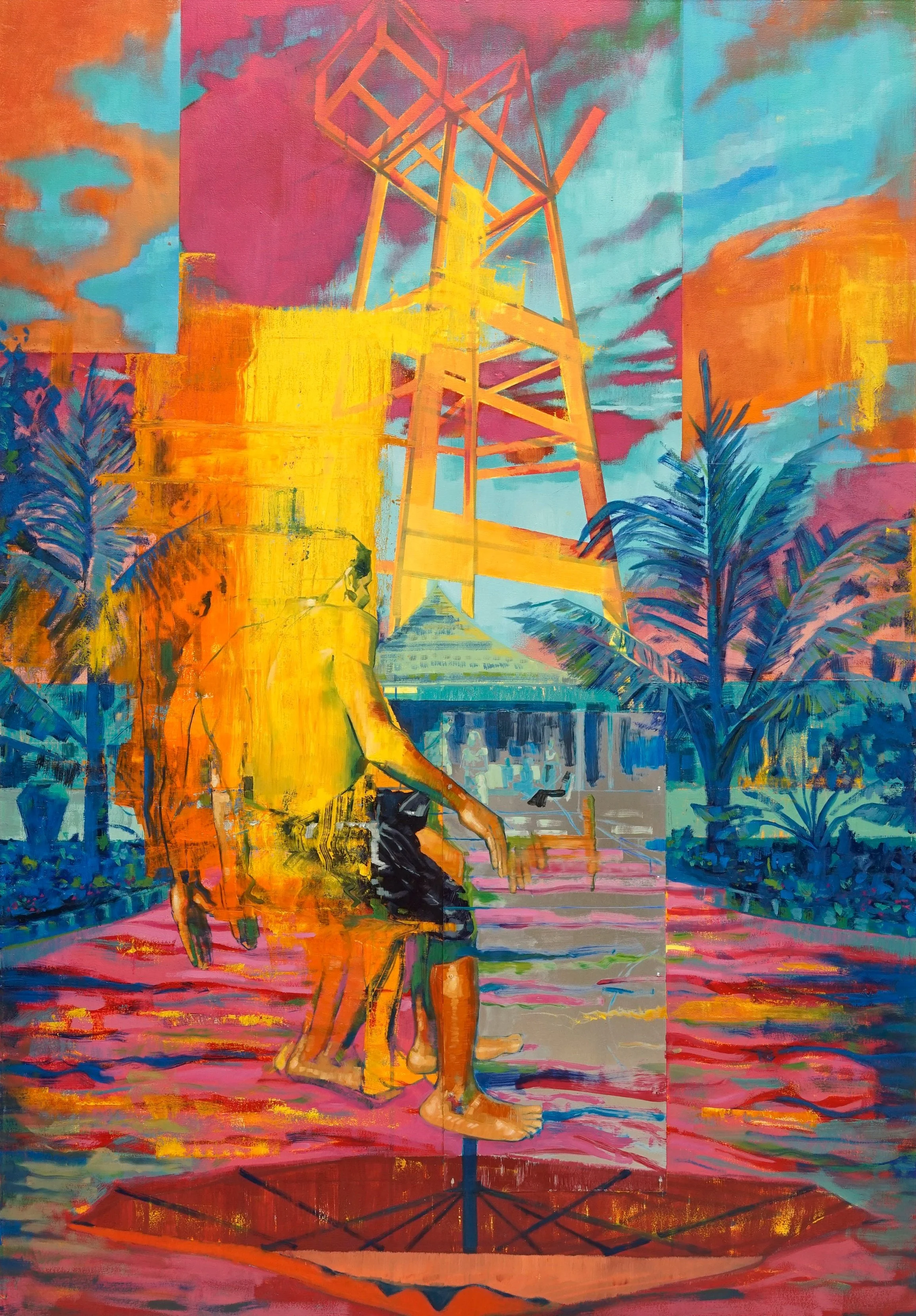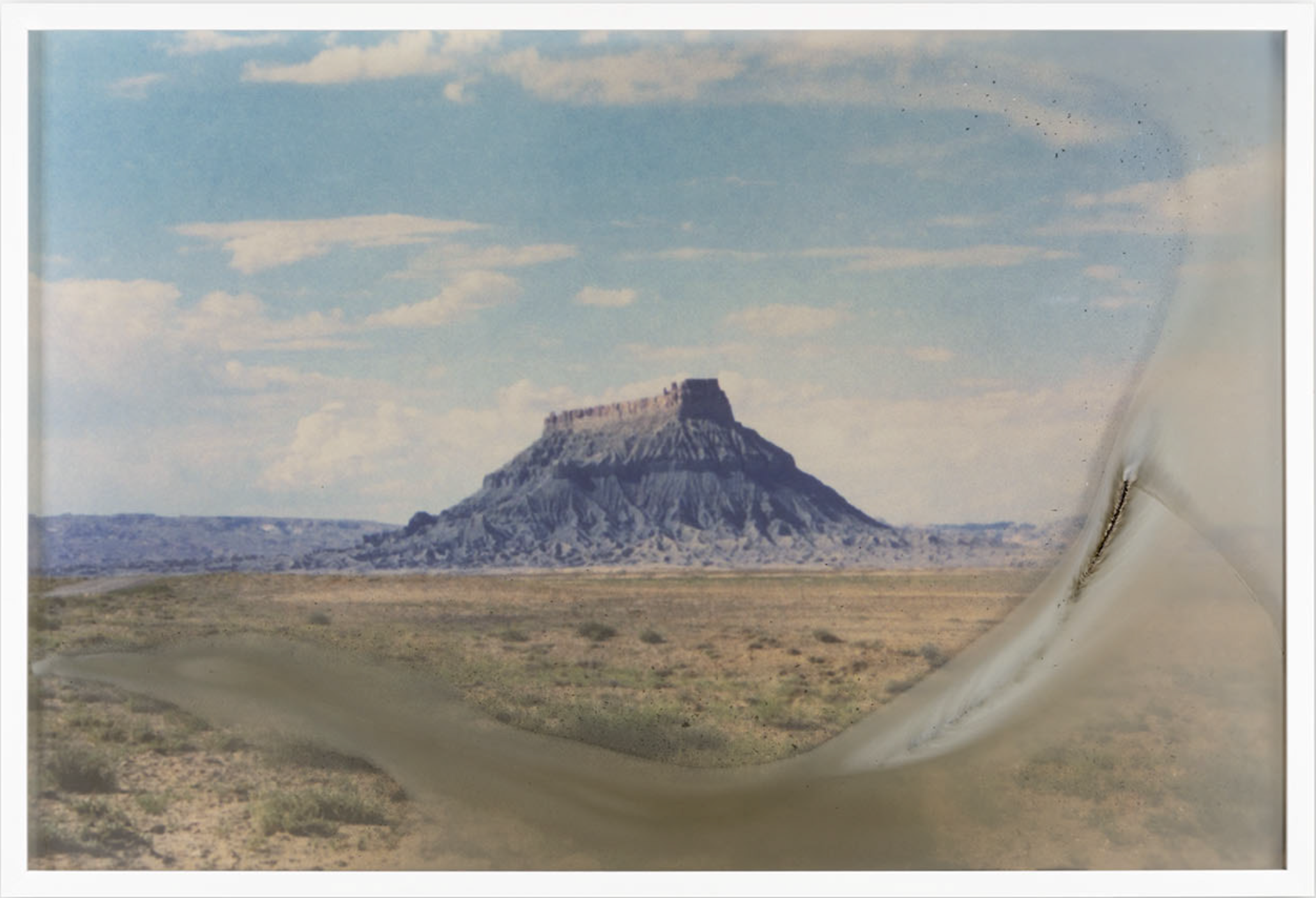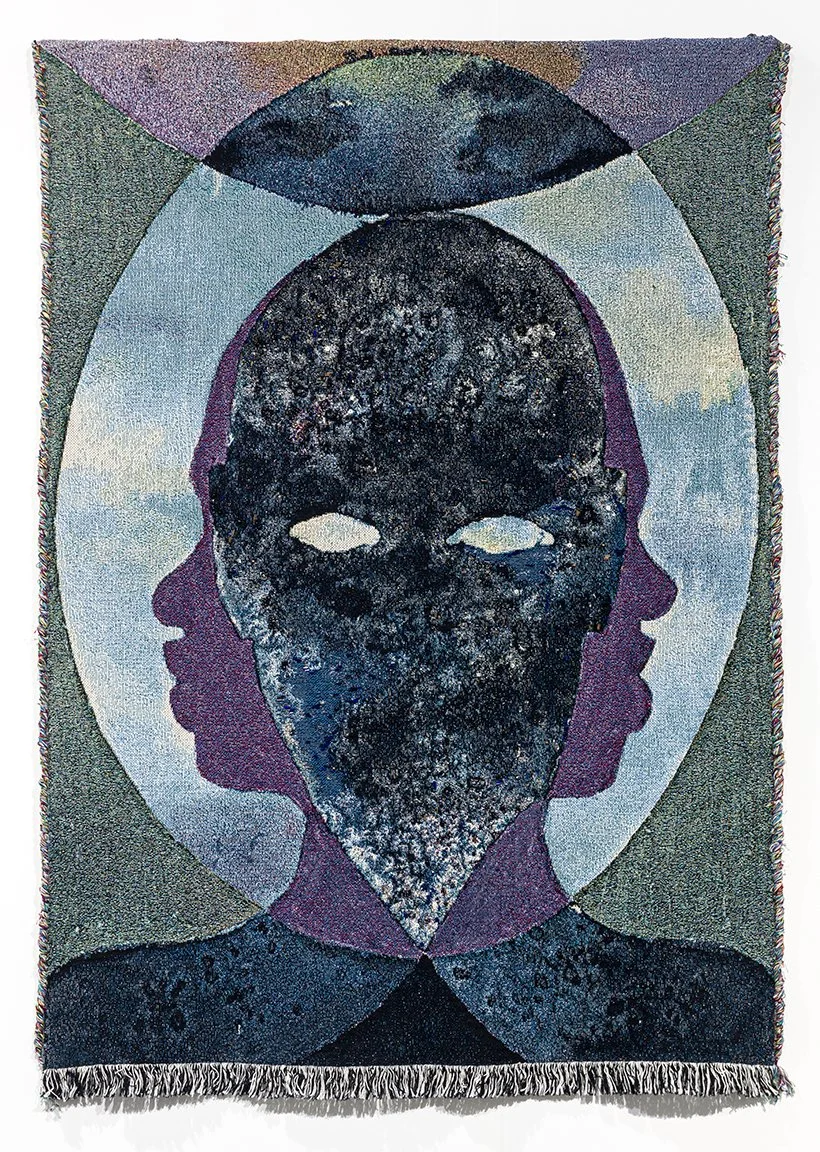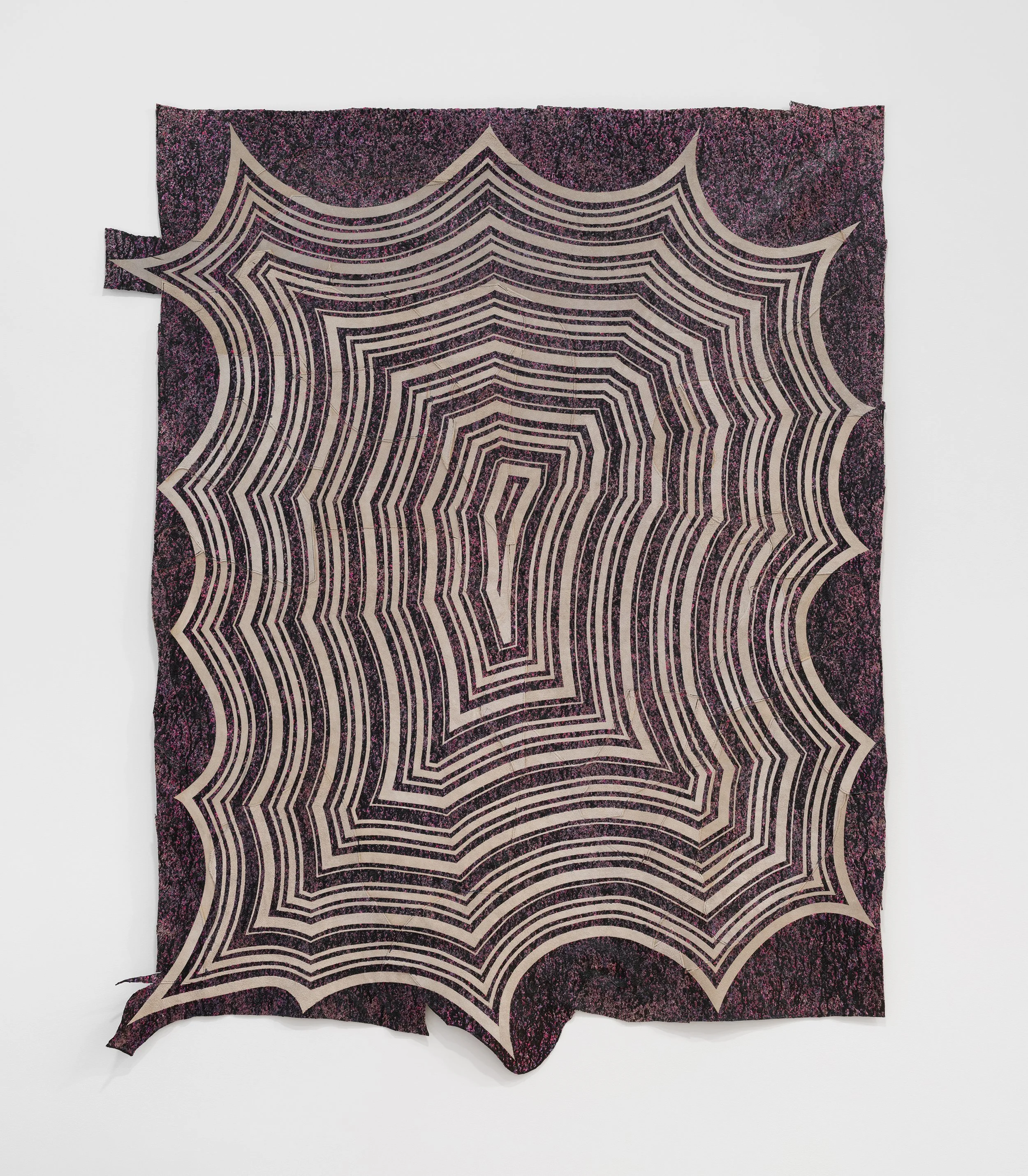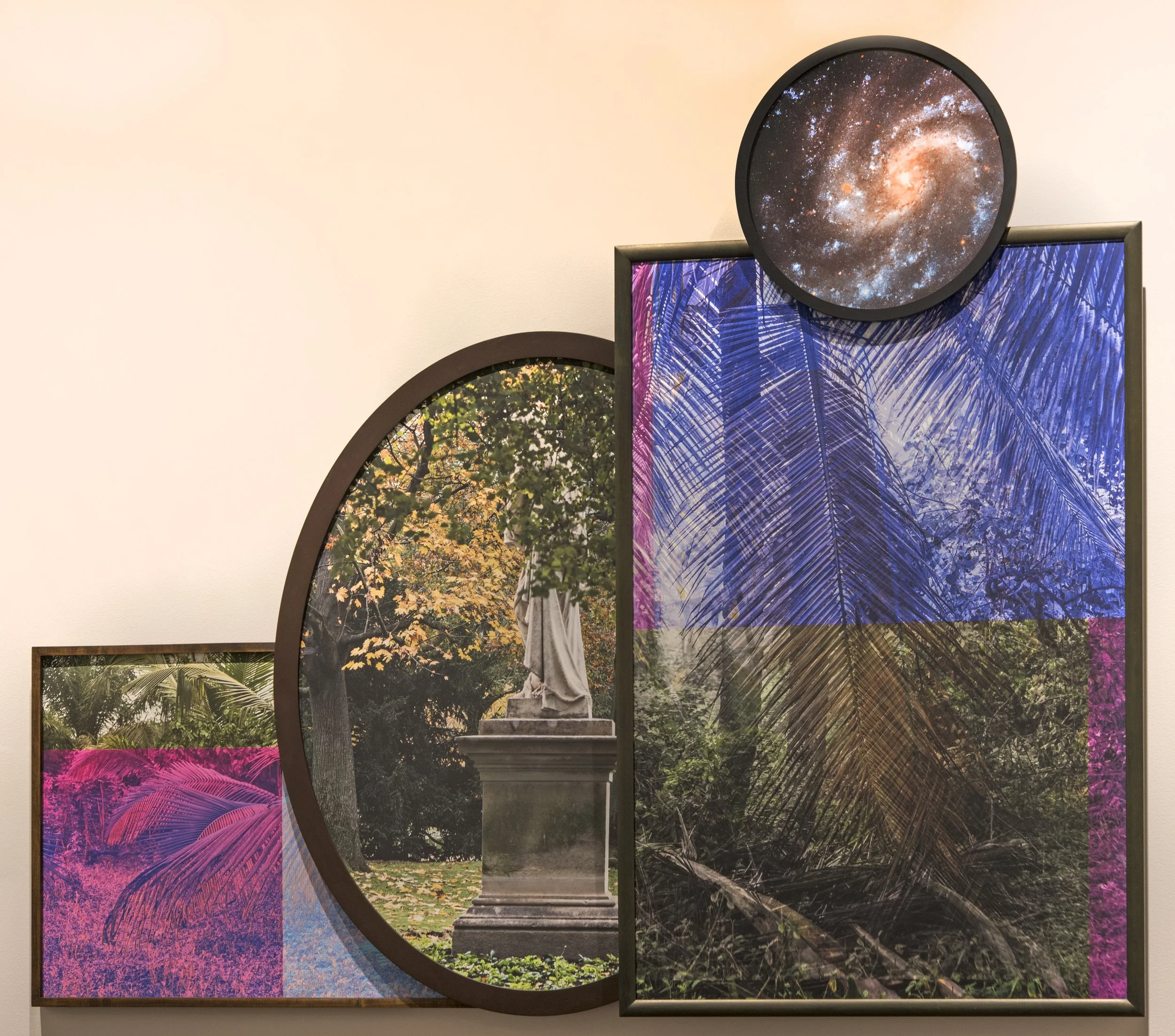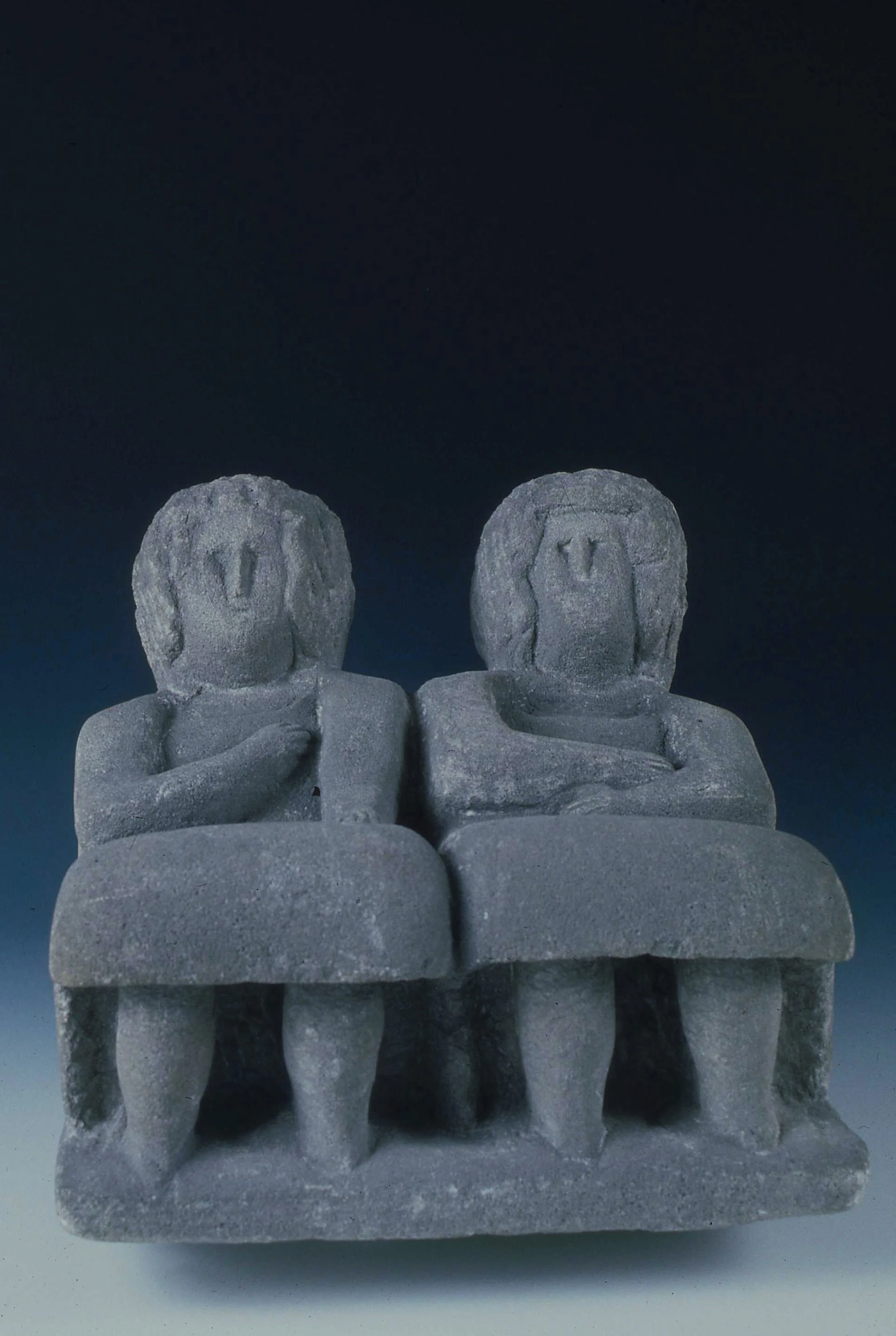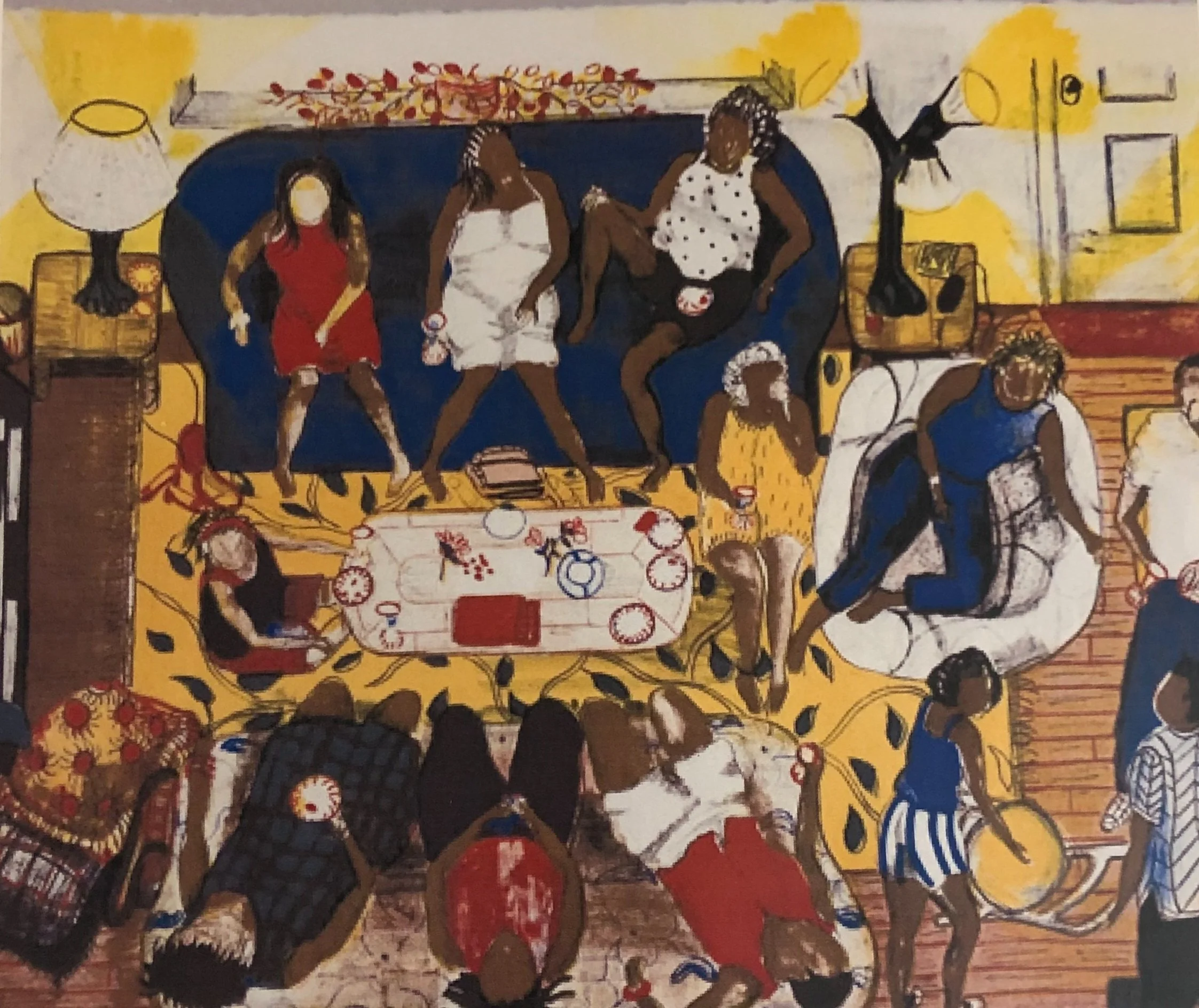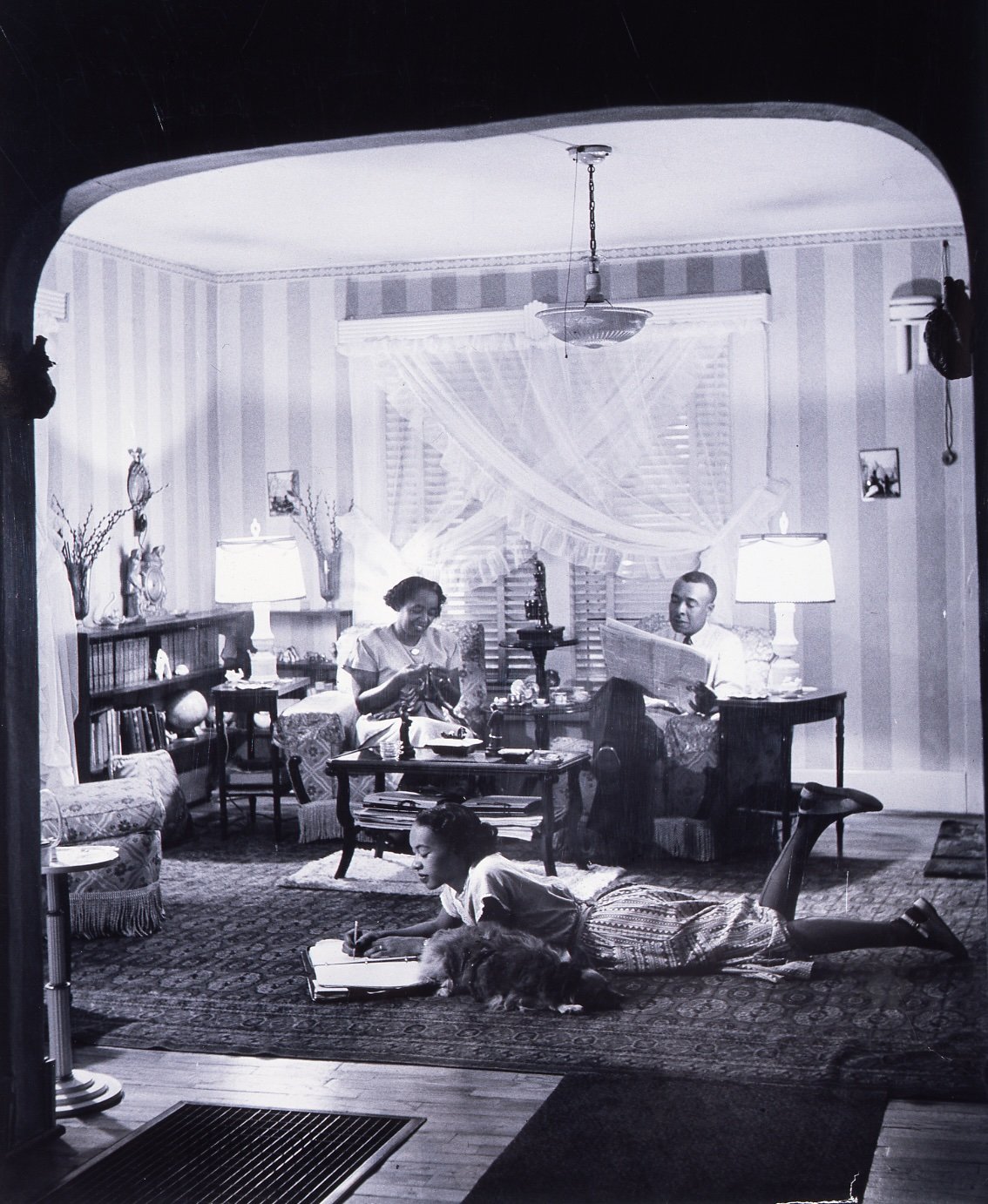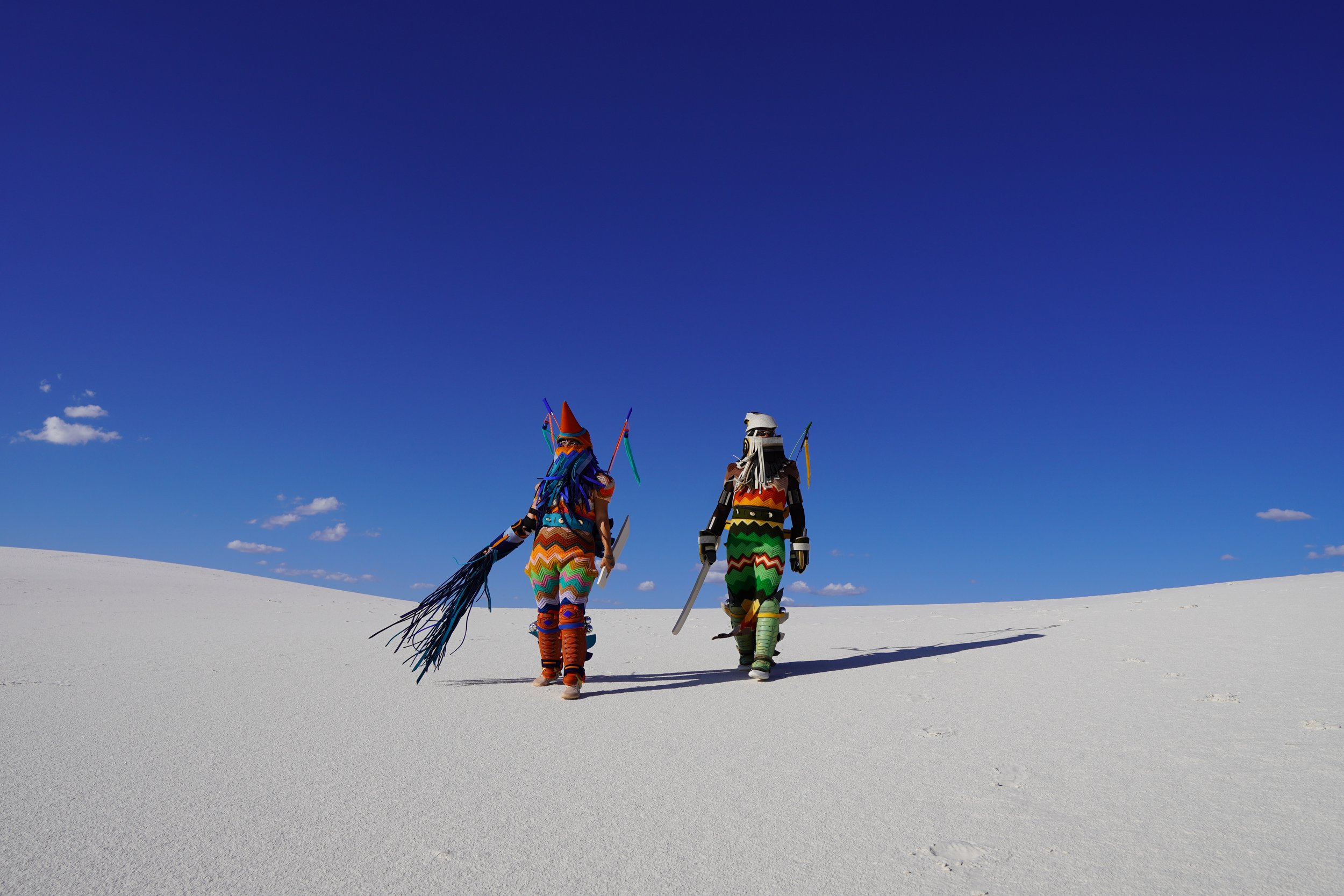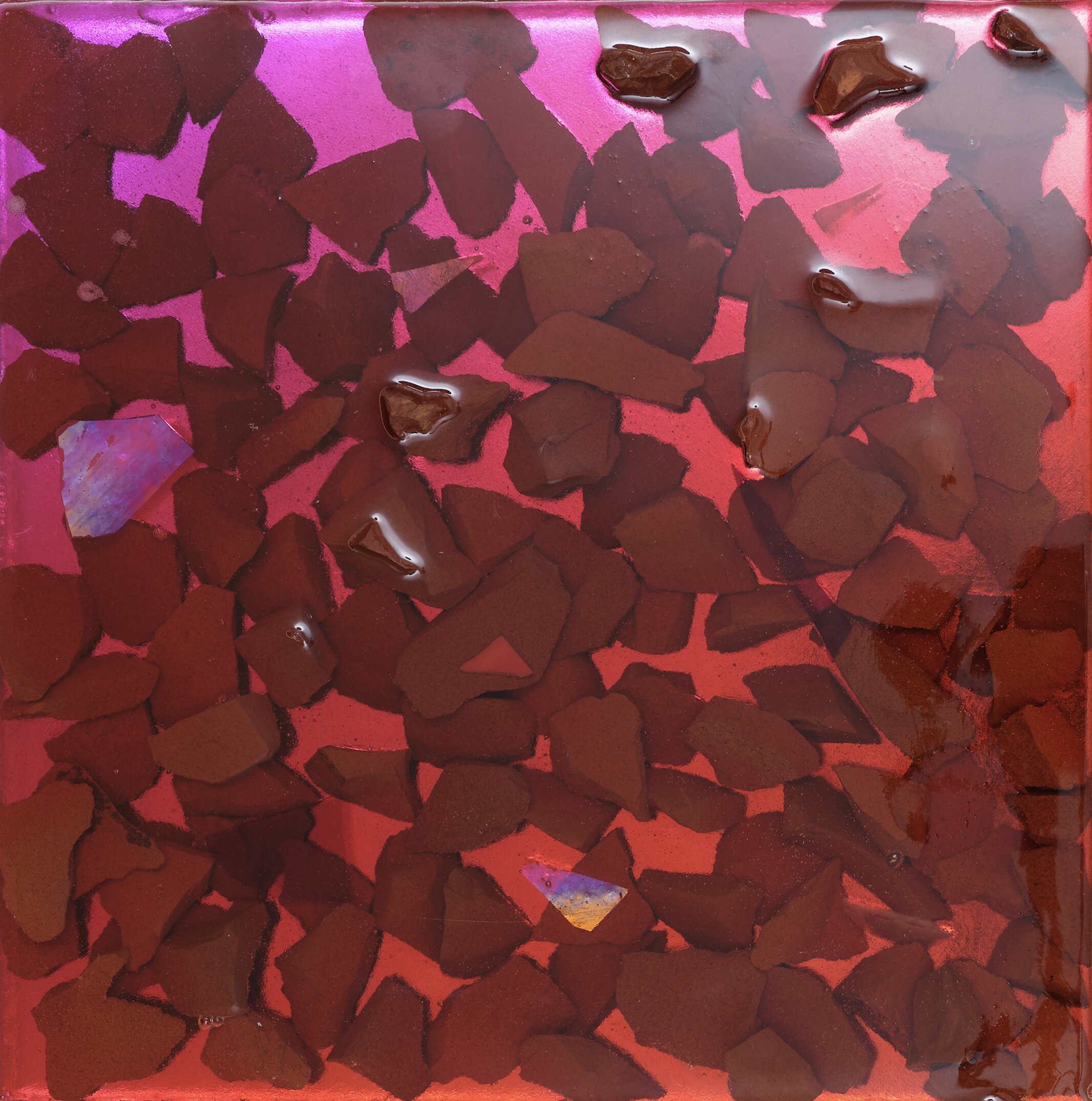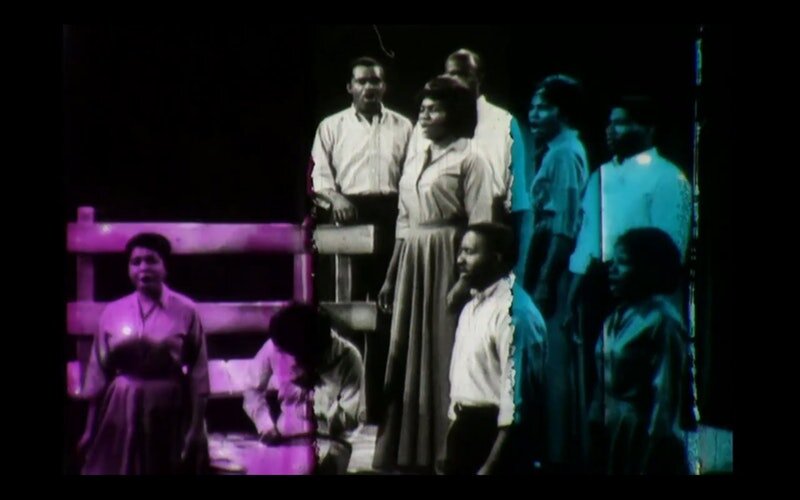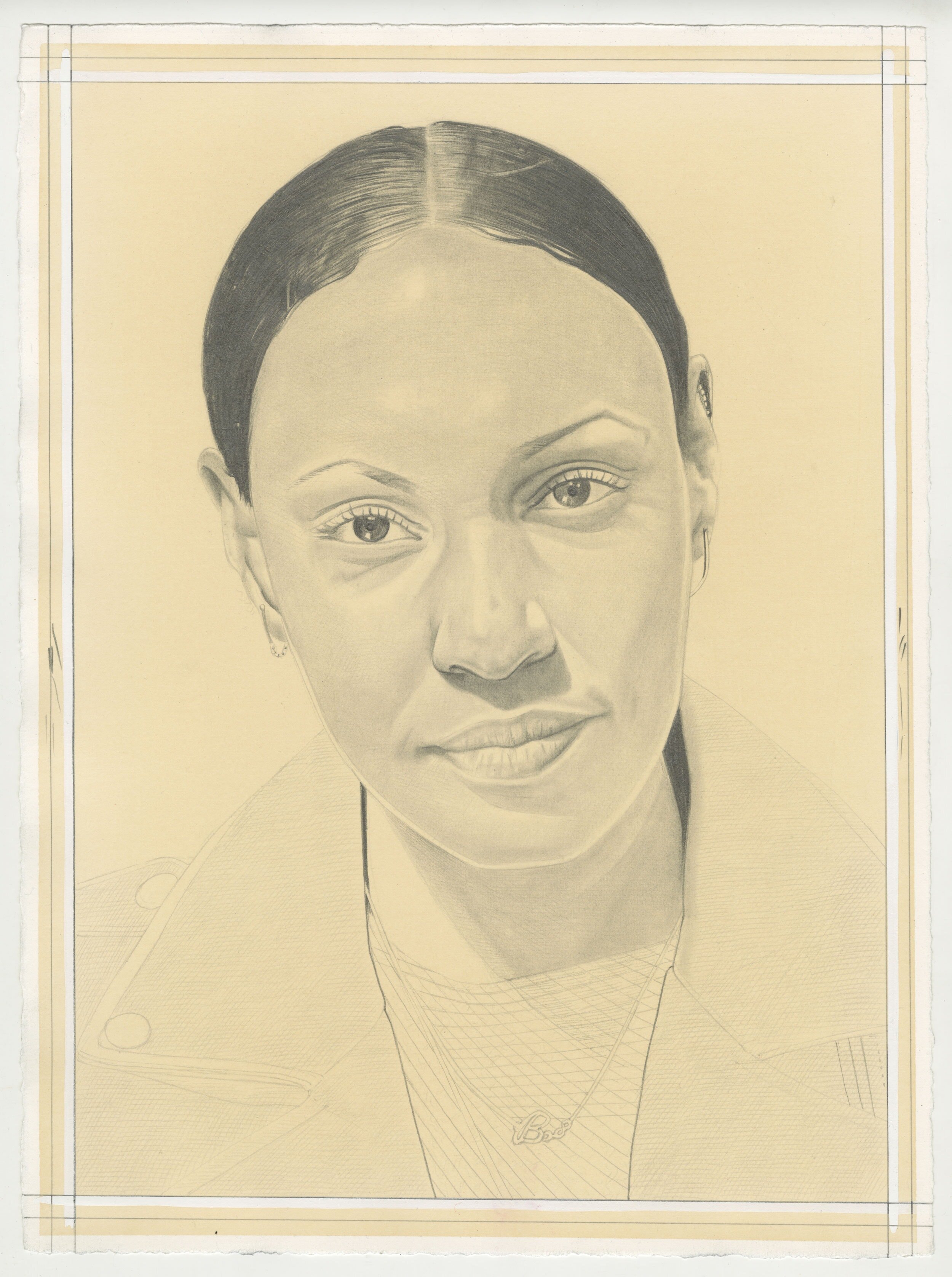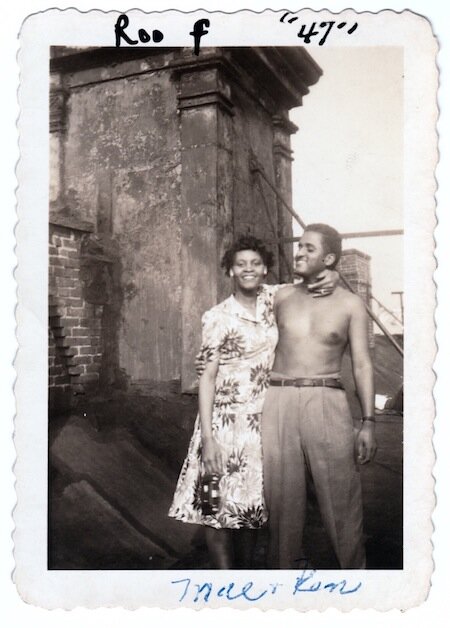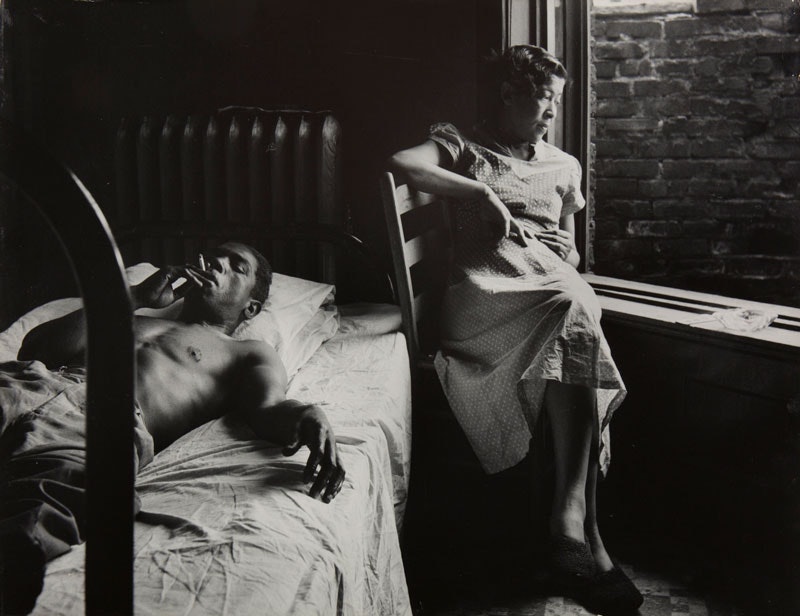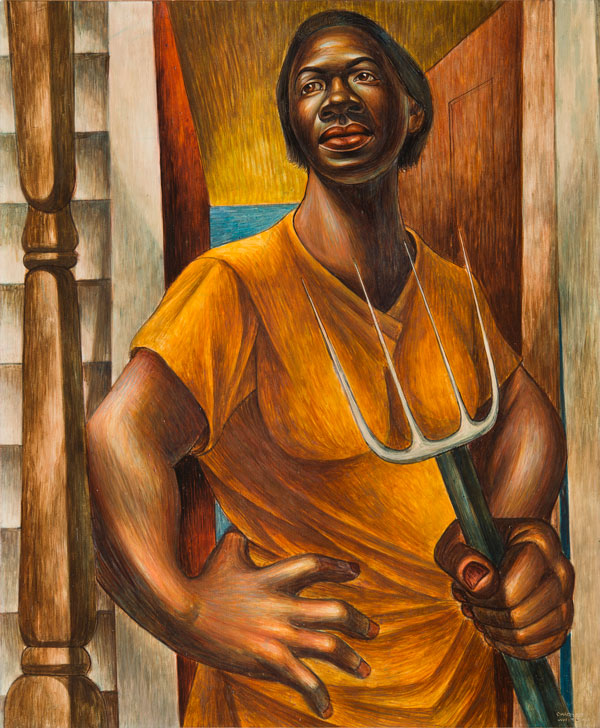Ray Anthony Barrett | Ashanti Chaplin | Phoebe Collings-James | Cara Despain | Andrae Green | Margaret Griffith | Jane Chang Mi | Olivia “LIT LIV” Morgan | Esteban Ramón Pérez | Adrienne Elise Tarver
Andrae Green, Divers X, 2023
Against Dystopia features artworks that inhabit a spectrum of anti-dystopian thought, from mobilizing conceptualism to overcome historic traumas and the precarity of the present, to envisioning future utopias against seemingly insurmountable odds. The exhibition is curated by nico w. okoro and includes ten international artists representing twelve cities across the United Kingdom, Jamaica, and all five regions of the United States. The drawings, installations, paintings, photographs, sculptures, and textiles on view are enriched by each artist’s distinct lived experience and actively resist inheritance of the status quo. Artworks are grouped into three thematic sections, each of which explores creative strategies of resistance and works against dystopia at all costs: field research, symbolic interactionism, and speculative fiction.
Field Research
Ray Anthony Barrett (Missouri), Ashanti Chaplin (Oklahoma), Cara Despain (Utah/Florida), and Jane Chang Mi (Hawai‘i/California) use field research to map histories of frontierism, settler colonialism, and land politics onto ecological and socioeconomic systems today. With a focus on listening to the land and sea to both unearth and atone for difficult truths, these artists name and dismantle dystopian practices on the path to reconciliation. Embracing an appreciation for both hyperlocal traditions and the tenets of global citizenship, each underscores our shared duty to ensuring ecocultural sustainability and Earth’s habitability for future generations.
Ray Anthony Barrett, Cul-de-sac, 2021
Ray Anthony Barrett—an artist and chef who recently returned to his hometown of Kansas City, MO after living in Los Angeles for the past decade—takes an interdisciplinary approach to interrogating, “the evolution of agricultural and land practices and the impact of dispossession and colonialism on foodways.” His recent project, Go Tell It On The Mountain, which was commissioned by Active Cultures in 2021, documented a seven-month journey across the American West through writing, research, film and cooking. On view are three oil paintings, a photograph, and a sculpture that continue lines of inquiry explored on the road. Propelled by an impulse to, “reclaim agency around food security and survival in the midst of climate catastrophe,” Barrett looks to the land for answers, skills, and strategies, while also honoring the fraught histories of forced migration and displacement that it bears. In Uprooted, Barrett expertly illustrates this tension—and the enduring impacts of colonialism and slavery—by depicting the fractured nature of Black family trees, with missing or phantom limbs and roots.
Ashanti Chaplin, Untitled (Hidden Gospels of Dust) 1, 2024
Interdisciplinary artist Ashanti Chaplin characterizes her research-driven practice as, “a deep dive into materials and ideas with historical and archaeological significance.” A Tulsa, Oklahoma native, Chaplin finds inspiration in Oklahoma’s thirteen Historic Black Towns and what their rich red soil can teach us about, “the profundity of earth, the specificity and ambiguity of place, and a connection to a divine or cosmic life force.” In her recent body of work, Hidden Gospels of Dust, Chaplin conducted extensive research across all thirteen towns, gathering soil, clay, and dust in collaboration with community members, a process that engendered her groundbreaking work, Earth Elegy. Her works on view—which include an AI-generated photograph of an encapsulated dust devil, a series of meditative linseed oil and soil drawings, and an immersive sculptural installation with original score—extend from her ongoing research into dirt as subject of public spectacle and object of private ritual. While dust is often understood as the byproduct of Earth’s erosion or ruin, Chaplin channels its defiant endurance to render spiritual utopias that transcend Earthly limits.
Cara Despain, slow burn (Factory Butte), 2022
Cara Despain is a multidisciplinary artist from Salt Lake City, Utah who grew up within a community of Downwinders impacted for generations by the fallout of nuclear testing conducted at the Nevada Test Site in the 1950s and 60s. In her drawing series, Operation Teapot —Turk Sequence, which at first glance resemble Rorschach tests whose, “splendor deeply betrays the harm,” Despain transforms mirrored stills from her video Test of Faith—which borrows declassified, archival footage of atomic tests—into dark yet delicate, “psychological abstractions.” Also on view are photographs from her Slow Burn series, where she ignites a dynamite fuse within the frame, “leaving a trail of destruction across a precious medium: landscape photography.” These powerful images—one of which depicts Owen’s Lake, a lake that was destroyed by the 1913 construction of the Los Angeles Aqueduct and now sits as the greatest source of dust pollution in the country—caution us to protect nature from our ever-expanding ecological footprint, weapons development, and the man-made disasters both often leave in their wake. In her somber carbon painting Paradise, which is made of ashes she collected from the 2018 Camp Fire, Despain shifts her focus to the present and future tense, marking, “a changing climate and sustained forest mismanagement.” The work is part of an ongoing series of reimagined landscape paintings that—instead of depicting romanticized, Western utopias—“visualize large-scale systems change, and the consequences of human habitation on the planet.”
Jane Chang Mi, Untitled - (Cocos nucifera (L.)), 2014 - present
Jane Chang Mi’s interdisciplinary artistic practice—which includes drawing, video, photography, textile, sculpture, and installation—is informed, in part, by her professional training as an ocean engineer. Adopting a research-based approach, she explores militourism, scientific colonization, and the post-colonial ocean environment to both expose, “the occupation and militarization of the Pacific Ocean by the United States,” and “express our contemporary relationship to nature and each other, enabling communication across cultures and barriers.” In Untitled - (Cocos nucifera (L.)), Mi considers how DNA analysis of more than 1,300 coconuts from around the world reveals that, “coconut genetics also preserve a record of prehistoric trade routes and of the colonization of the Americas.” Mi also celebrates the coconut as an abundant contemporary resource, whose milk, flesh, skin and coir can be used to sustain, “daily island and seafaring life,” in Hawai‘i where she and her extended family live. In Church of Life, she honors the significant contributions of Hawaiian activist George Jarrett Helm Jr. to the Aloha‘Āina movement, which advocates for collective stewardship of and care for the land. The felt banners are made of text from Hawaiian ‘ōlelo noʻeau, or proverbs, one of which reads, “100, Ako ‘e ka hale a pa‘a, a i ke komo ana mai o ka ho‘oilo, ‘a‘ole e kulu i ka ua o Hilinehu: Thatch the house beforehand so when winter comes it will not leak in the shower of Hilinehu. Do not procrastinate; make preparations for the future now.”
Symbolic Interactionism
While Margaret Griffith (California), Olivia Morgan (New York), and Adrienne Elise Tarver (New York) work through markedly different mediums and styles, they share a fearlessness in addressing ongoing tensions and questions surfaced amidst the political firestorm of 2020. Embracing tenets of symbolic interactionism, or the theory that individuals shape and are shaped by society through daily interactions and the co-creation of meaning from symbols, these artists remind us of the power of human connection to bridge difference. Each steers towards social cohesion by processing collective grief and the enduring impacts of the 2020 presidential election, the proliferation of the COVID-19 pandemic, and the resurgence of the Black Lives Matter Movement respectively. Whereas Morgan and Griffith subvert symbols that often polarize rather than unite us within physical space—such as fences, face masks, and smartphones—Tarver reaches into the past to pull forth reimagined symbols that speak to our spiritual interdependence.
Margaret Griffith, 15th, 17th, and Pennsylvania, 2017/2019/2021/2024
Margaret Griffith is a visual artist based in Los Angeles whose installations, sculptures, public art, and works on paper, “explore both the physical presence and psychological manifestations of boundaries and barriers found in the built environment.” In her work 15th, 17th and Pennsylvania, Griffith—who uses paper as both a 3D and 2D material—presents a life-size yet abstracted replica of the East and West gates of the White House in Washington, D.C.. She treats her delicate, hand-cut paper with metallic paint from The Home Depot to transform the gates—a symbol of power, privilege, and division—into a deceptively fortified proxy, “suggesting the power, decadence and ruin of an institution in crisis.” This work comes from a series in which Griffith critiques the ubiquity of gates, fences and walls in our daily lives, and their role in sowing division, parceling off community resources, and seeding dystopia within both urban and suburban landscapes. In State Drawings—a drawing project initiated in response to the 2020 presidential election that’s been expanded here to include all fifty states—Griffith depicts the, “uniquely shaped boundary of an individual state through a group of overlapping circles whose pattern [alludes] to early voting processes and the controversial butterfly voting ballots.”
Olivia “LIT LIV” Morgan, In My Solitude, 2023
Olivia “LIT LIV” Morgan is a Jamaican–American photographer based in Harlem, New York, whose bold portraits both reflect her artistic journey as a queer woman of color and champion the, “emotional and physical narratives of overlooked and underrepresented people.” In discussing the significant role photography has played in her own life, Morgan states, “Photography helped me break away from my self-isolation; it allowed me to experience a new environment and meet new people.” In Chrome Heart Queens, Morgan depicts two Black women wearing chrome face masks that reflect both the abstracted visage of the other and their environs. Here, she takes an Afrofuturist approach to manifesting intimacy, connection and Black love amidst the pervasive isolationism and fear induced by the COVID-19 pandemic. In My Solitude, in contrast, depicts, “the disconnection we often feel, even when surrounded by people.” This striking black and white photograph invites viewers to consider dystopian forces at play within their day-to-day lives, preventing them from pursuing genuine connection and, “mobilizing collective resistance against shared struggles.” In When It’s All Said n’ Done, Morgan depicts two lovers smoking, following what one imagines was a tender moment of intimate connection, shattering conventional representations of gender binaries by depicting, “unbiased selves, pure and enthralled in love.”
Adrienne Elise Tarver, Devil Tapestry, 2023
Adrienne Elise Tarver, an interdisciplinary artist based in Brooklyn, New York, addresses, “the complexity and invisibility of Black female identity,” through her multifaceted practice. On view are three tapestries from her Manifesting Paradise series which began in 2020 against the backdrop of the Black Lives Matter protests and features symbolism inspired by tarot cards. Embodying Tarver’s, “desire to know that there is progress and beauty in the future,” the tapestries borrow an ancient divination framework to manifest the world one wants to see today. Tarver expounds, “More than just stating our existence (I am a man) or that we matter (Black Lives Matter), and similar in sentiment to Sun Ra’s ‘We are in the Future’, Manifesting Paradise ventures into unknown futures to decipher the messages that we need to hear in the present…Having come of age in a thriving economy and entering the workforce amongst its demise, my generation’s search for omens is related to a mistrust in institutions that destabilized futures we were promised and that in many cases never had our well-being or future interests in mind.” Also on view are two collages from Immersed, a series that triumphantly depicts nude brown women emerging from utopian landscapes and questions if these figures are real, or merely, “figments of desire and representations of another archetype—the mythological, the muse, the inhabitants of the unreal utopia?”
Speculative Fiction
Phoebe Colling-James (United Kingdom), Andrae Green (Massachusetts/Jamaica) and Esteban Ramón Pérez (California) boldly envision alternative realities by using speculative fiction and symbolic allegory to sew threads of connection across time and space. Each resists linearity and subverts narrative tropes to instead materialize the fluid spiritual dimensions of lived experience. Through their layered ceramics, paintings, and sculptures, these artists mine the depths of their respective Jamaican/British, Jamaican/American, and Chicanx heritages to comment more broadly on social conditions today, prompting us to dream beyond what’s readily visible or knowable.
Andrae Green, Ode to Meta, 2024
Born in Kingston, Jamaica, Andrae Green's artistic practice emanates from his early discovery of Marvel comics as a portal to transcend the economic hardship and social upheaval he experienced there. This discovery sparked a deep inner world, where Green envisioned whimsical characters and narratives that embodied hope and freedom, motifs that persist in his vibrant paintings today. Through imaginative allegory, Green explores, “the existential and phenomenological aspects of living a meaningful life through the lens of family relationships.” In his ongoing Divers series, Green stages a dialogue between his deceased father and his young son against the reimagined backdrop of Kingston Harbor, evoking nostalgia whilst embodying the power and importance of knowledge transfer between generations. In Ode to Meta, Green depicts Meta Warwick Fuller—an under celebrated artist of the Harlem Renaissance and, “an agent of change who worked against the dystopian realities of her time,”—overlooking a row of modern apartment buildings. A believer in hope as, “the best defense against dystopia,” Green connects historic struggles to contemporary life, reminding viewers of their agency and responsibility to enact change today.
Phoebe Collings-James, The Preacher , 2023
British-Jamaican artist Phoebe Collings-James works across ceramics, drawing, and sound to excavate, “knowledges of feelings, the debris of violence, language and desire which are inherent to living and surviving within hostile environments.” On view is a selection from their new series of anthological sculptures that animate ceramic forms, exploring the, “relationships between heresy, faith, and orthodoxies of church, state, and society.” Here, Collings-James depicts four archetypes—the Guardian, Preacher, Silo and Infidel—placing their perceived societal roles in productive dialogue and imagining their collective action against forces of oppression. The speculative narrative Collings-James materializes is further nuanced by each individual sculpture’s formal treatment, which includes sgraffito, or surface scratches to reveal hidden symbols, patterns, and words within. Addressing the fraught sociopolitical histories that clay holds while also honoring its historic role in evidencing, “the earliest known forms of communication,” Collings-James deems its firing a political act that, “[sets] imperial wastelands on fire,” to make space for new narratives.
Esteban Ramón Pérez, You Are Not Your Body, 2023
Interdisciplinary artist Esteban Ramón Pérez draws upon his Los Angeles upbringing, Chicanx heritage, and formative experiences as an apprentice in his father’s upholstery shop to create transcendent artworks exploring the political intersections of social, cultural, and spiritual identities. Pérez renders evocative narratives and radiating compositions on scrap leather that stitch together fragmented postcolonial histories and collective memories. In, You Are Not Your Body, Pérez uses automotive tape to freehand draw, mask off, and paint his interpretation of the halo of the Mexican Virgin Mary, a supernatural mother figure who appeared as an apparition yet embodies hope for salvation. Resisting the aesthetics of the Mexican Baroque art through which she is most often depicted—and instead opting for a Postmodern, non-figurative portrait—Pérez offers meditative space in which to consider the role of idols in guiding our actions in times of crisis. While his more figurative paintings insist upon a close read by using scarring techniques, similar to that of a tattoo, to embed a narrative directly within the leather, this, “emanation-as-portrait,” demands that the viewer maintain a pensive distance from the work to take in its message. By transforming rasquache, or discarded materials, into loaded objects of spiritual, cultural, and artistic value, Pérez celebrates the ingenuity of Chicanx culture, and articulates a practice of dual reverence and resistance.
Conclusion
Against Dystopia is a far-reaching exhibition, both in terms of the diverse backgrounds and approaches of its featured artists, and the social, cultural, and geographic ecosystems those artists represent and critique. Presented on the eve of the 2024 presidential election, Against Dystopia transforms fear and anxiety surrounding the uncertainty of our shared future into a tangible site of hope—one where collective memory reminds us of our agency to enact change today, and rich cultural traditions empower us to imagine alternative futures. Of significance is the inclusion of artists who identify as multihyphenates, playing numerous social roles within their communities, such as advocate, change agent, chef, documentarian, educator, father, filmmaker, mother, musician, oceanographer, researcher, and too many more to name. Against Dystopia opens concurrently with The Getty's Pacific Standard Time: Art x Science x LA, which similarly explores, “opportunities for civic dialogue around some of the most urgent problems of our time by exploring past and present connections between art and science.” By convening an international group of visionary artists to help initiate these dialogues, Against Dystopia prompts viewers to pursue deeper understanding of shared challenges and solutions, on both the micro and macro levels.
AGAINST DYSTOPIA RESOURCE LIST
AGAINST DYSTOPIA READING LIST
Susan Abulhawa, Against the Loveless World, 2021
Ray Anthony Barrett, Dispatches from the Western Wild, 2021
adrienne maree brown, Holding Change: The Way of Emergent Strategy Facilitation and Mediation, 2021
Octavia Butler, Parable of the Sower, 1993
Tanehesi Coates, The Message, 2024
T.J. Demos, Radical Futurisms, 2023
Natalie Diaz, Postcolonial Love Poem, 2020
Demian DinéYazhi´, WE LEFT THEM NOTHING, 2021
Alexis Pauline Gumbs, Survival is a Promise: The Eternal Life of Audre Lorde, 2024
Woody Guthrie, House of Earth, 2013
Epeli Hau‘ofa, We Are the Ocean: Selected Works, 2008
Yuval Noah Harari, Sapiens: A Brief History of Humankind, 2015
Noor Hindi, Dear God. Dear Bones. Dear Yellow, 2022
Hannah Holmes, The Secret Life of Dust: From the Cosmos to the Kitchen Counter, the Big Consequences of Little Things, 2003
Robin D. G. Kelley, Freedom Dreams: The Black Radical Imagination, 2003
Diane Lutz, Deep History of Coconuts Decoded, 2011
Robert MacFarlane, Underland: A Deep Time Journey, 2019
Ms. Lilly McEachern, Painting Hope: Selected Works by Andrae Green, 2024
Hoodoo Sen Moise, Working Conjure: A Guide to Hoodoo Folk Magic, 2018
Rodney Morales, Hoʻi Hoʻi Hou: A Tribute to George Helm & Kimo Mitchell, 1984
Toni Morrison, Paradise, 2014
Mary Kawena Pukui, 'Ōlelo No'eau: Hawaiian Proverbs and Poetical Sayings, 1983
Frank Shyong, Column: Fences in Los Angeles Have Gotten Taller, Gone Horizontal, Redefining Neighborhood Life, 2024
Haunani-Kay Trask, From a Native Daughter: Colonialism and Sovereignty in Hawai‘i, 1999
Derek Walcott, Omeros, 1990
AGAINST DYSTOPIA WATCHLIST
Ray Anthony Barrett, Go Tell It On The Mountain, Active Cultures, 2021
Ken Burns, The Dust Bowl, PBS, 2012
Ashanti Chaplin, Dust to Dirge, ArtNow 2023, Oklahoma Contemporary, 2023
Cara Despain, Carbon Paintings, Slow Burn, and Test of Faith, Vimeo, 2024
George Helm, Kaho`olawe Aloha `Aina, YouTube, 1977
AGAINST DYSTOPIA PLAY LIST
Nina Chanel Abney, Jigsaw Puzzle, MoMA Design Store
Derrick Adams, TLRAR Black Unicorn Pool Floatie, The Last Resort Artist Retreat Shop
DARNstudio, G.O.A.T. The Art Game, Newark Museum of Art
Cara Despain, Plastocene Swimwear Line, 2022
Naima Green, Pur·suit, 2019
Adrienne Elise Tarver, Manifesting Paradise Tarot Deck
AGAINST DYSTOPIA MIXTAPE
Pastor T.L. Barrett and The Youth for Christ Choir, Like A Ship (Without a Sail), 2017
Phoebe Collings-James, Soundcloud
Chick Corea, Mad Hatter Rhapsody, 1978
George Helm, A True Hawaiian, 1996
Bob Marley, One Drop, 1979
Aja Monet, When the Poems Do What They Do, 2023
Serafine 1369 and Young Nettle, Sounds 4 Survival: We Make A Way To Invent The Rhythm Through Versions Of Our Shared Name, Counterflows, 2021
Burning Spear, Marcus Garvey, 1975
